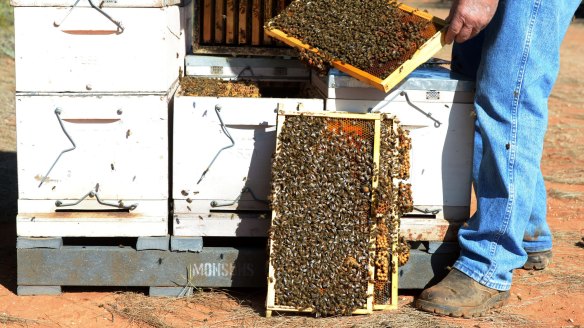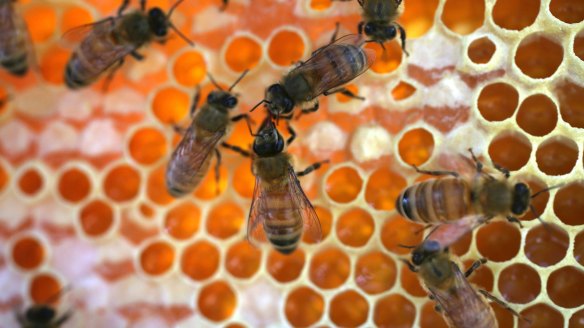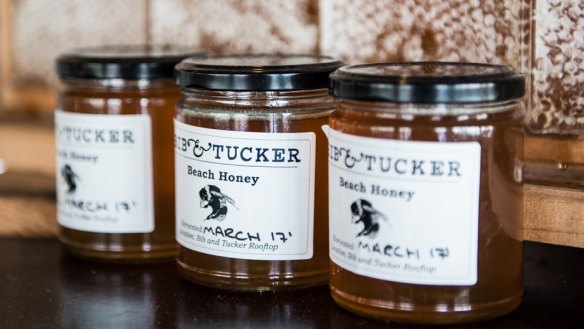The sweet benefits of urban beekeeping

Bib & Tucker owner Eamon Sullivan and head chef Scott Bridger consider their transformed restaurant rooftop a cracking success. One hundred and fifty thousand bees buzz across three hives at the North Fremantle restaurant, producing up to 200 kilograms a year of fragrant, salty honey that makes for a rewarding project and delicious inspiration.
"Our respect for the bees and their honey is enormous," says Bridger. "It's inspiring to gather the honey yourself and let it inform your cooking."
They are not alone. Urban beekeeping is on the rise, spurred by an alarming decline of the global bee population due to insecticides, diseases and parasites, including the deadly Varroa mite.

"The global economic benefit of bees' pollination amounts to $380 billion per year," says Jack Telford, of Beewise. "Without pollination, about one third of the crops we eat would have to be pollinated by other means, or they would produce significantly less food."
Urban beekeeping is not only beneficial for bees, but hits the sweet spot for their keeper.
"Honey and beeswax are incredibly versatile," says Telford. "Artisanal honey production is very popular right now and if you have a vegetable garden a beehive can dramatically boost its production."

Another benefit is the bees themselves.
"You can watch them come and go for hours," he says. "There is something intriguing about watching them waggle dance and bring home pollen in all sorts of colours."
Bridger agrees. "Bees are the perfect pet and provide a return of incredibly beautiful honey. We sit right on the Indian Ocean surrounded by an abundance of native trees and sea succulents so our honey has a slightly salty taste and takes on varying flavours throughout the seasons. It's incredible.
"Sullivan and Bridger host a honey degustation dinner each year showcasing their different flavour profiles.
"We also utilise the honeycomb on cheese boards and in our daily specials," says Bridger. "Right now we are using our honey in a dessert called The Hive, which is a caramelised honey mousse with ginger shortbread, baked apples and white chocolate honeycomb."
Feeling inspired? Here's a starter guide from Beewise for the novice backyard apiarist.
- Start with a standard hive, either an eight-frame or 10-frame full-depth bee box. Your bee-suit, gloves, smoker and beekeeping equipment should be purchased from a reputable beekeeping supplier.
- Choosing the right location for your hive can have an impact on how productive your bees are and the amount of honey they produce. Select a position away from walkways and boundary fences and where sun is available through winter. The sooner the bees see the sun rise, the earlier they get to work.
- Ensure there are pollen and nectar sources, as well as water nearby so they can cool the hive down during hot weather.
- Source high-quality bees with a specially bred queen who can produce docile and productive workers. New bees are provided in a four-frame nucleus hive containing bees, brood, honey and a newly raised, mated and tested queen. The four-frames are transferred to the brood box of the new hive.
- A basic single-level hive can be assembled for about $135, while a double-level hive is about $170. A good quality nucleus hive with a quality queen costs about $175.
Restaurant reviews, news and the hottest openings served to your inbox.
Sign up